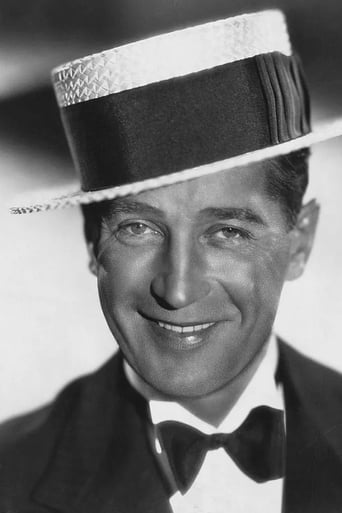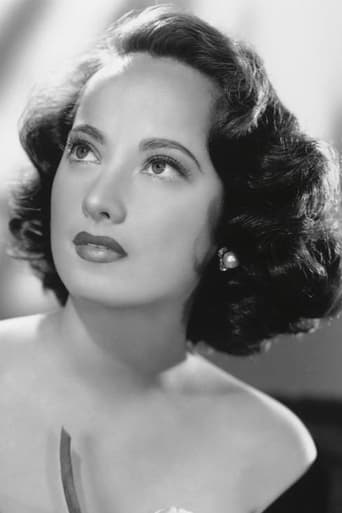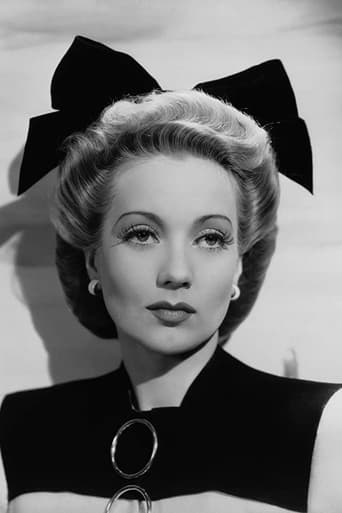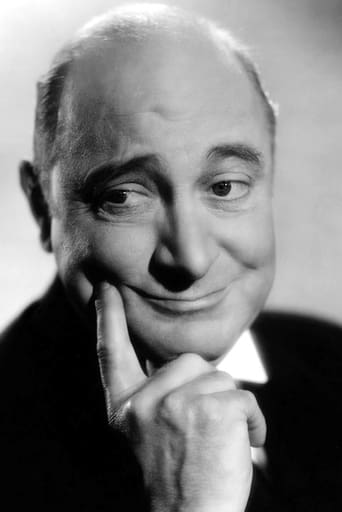Richard Burin
Folies Bergère de Paris (Roy Del Ruth, 1935) is a Lubitsch-like confection with numbers inspired by the kaleidoscopic choreography of Busby Berkeley. It's also among the best films I've caught this year. The story sees a vaudeville entertainer (Maurice Chevalier with his familiar persona) impersonate a baron (Chevalier again), leading to romantic complications for both. Ann Sothern is the entertainer's good time gal, with Merle Oberon the baron's flighty wife. It's witty and invigoratingly entertaining, with a fine performance by Chevalier in his dual role and a top supporting cast that includes Eric Blore, Robert Greig and Halliwell Hobbes. Despite the enjoyable plotting, the film's finest moments come through the slew of great numbers at both the beginning and the end of the film. The Singing a Happy Song finale, which won an Oscar for dance direction and features several hundred straw hats of varying sizes, is really something, but all the tunes are great: Valentine, Rhythm of the Rain, Au Revoir l'Amour and You Took the Words Right Out of My Mouth. This was Chevalier's last Hollywood musical until Gigi, 23 years later.
didi-5
A double role for Maurice Chevalier here, as a performer at the Folies Bergeres plus a rich Baron he impersonates as part of his act. When misfortune hits the Baron, the performer finds an off-stage assignment which can only lead to fun for him and the audience.Great musical numbers (especially Rhythm of the Rain and the finale with straw hats), strong casting (Ann Southern, Merle Oberon, and the hilarious Eric Blore), and a mixed identity plot which moves along with class and verve, 'Folies Bergere' is an extremely enjoyable example of Hollywood's 1930s flirtation with Europe.Chevalier's last US role for more than a decade is perfect for him, and the dual roles showcase his acting skills as well as providing lots of chances for that old Gallic charm.
FERNANDO SILVA
Simply marvelous music-comedy starring one of my favorites, Maurice Chevalier. Chevalier is at his usual debonair, charming, mischievous in this little gem of a film, impersonating entertainer Eugene Charlier and aristocratic Baron Fernand Cassini, with a very amusing plot based upon mistaken identity antics.His two leading ladies are both gorgeous: lovely, beautiful,elegant, sophisticated, regal, Merle Oberon as the Baroness and gorgeous, down-to-earth, fiery, ravishing Ann Sothern as Mimi, Charlier's partner.A couple of huge production numbers featuring Chevalier and Ann Sothern add for more fun.Above all, those were the days when Hollywood had such gifted and priceless talented character actors as Eric Blore, Halliwell Hobbes, Robert Greig et al, who were fantastic playing a variety of butlers, sidekicks, serious politicians etc., supporting perfectly the stars.Completely enjoyable classic film from start to finish. Try to catch it on the FOX Channel.
lugonian
FOLIES BERGERE De Paris (20th Century Pictures, 1935), directed by Roy Del Ruth, is the kind of movie musical that typifies the 1930s: mistaken identity, comical character actors, lavish sets, and production numbers in the Busby Berkeley manner. Starring Maurice Chevalier, it offers the legendary French entertainer the opportunity to play two separate characters that bear a close resemblance to one another, one being a music hall headliner with a clean-cut image whose trademark is his straw hat (like Chevalier), while the other sports a mustache, monacle and a touch of gray hair along his temple. Chevalier even gets to perform opposite two leading ladies, one his theatrical partner, the other, his wife. FOLIES BERGERE goes on record as Chevalier's last Hollywood musical for two decades, closing the chapter to this era in his career. Quite popular since his Hollywood debut at the Paramount studio in 1929, Chevalier returned to Europe where he occasionally appeared in movies abroad before beginning a new chapter in his career in 1957 when he returned to Hollywood once again where he would remain for another decade. As for Merle Oberon, she makes her Hollywood debut, appearing more exotic with her Javanese slant eyes and heavy make-up, compared to her more fresh and appealing features shortly after working under producer Samuel Goldwyn guidance where she performed in some of her best screen work, notably WUTHERING HEIGHTS (1939). Ann Sothern, a bright young blonde comedienne who found popularity in later years at MGM and on television, provides good opportunity in being both amusing and annoying as Chevalier's temperamental and jealous girlfriend, Mimi. The fun gets underway when Eugene Carlier (Maurice Chevalier), an entertainer at the Folies Bergere, doing a famed impersonation of the Baron Fernand Cassini (Chevalier), a banker, who, by chance, happens to be sitting in the audience with his stately wife, Genevieve (Merle Oberon). Because of a financial crisis that has put his fortune in jeopardy, the Baron decides he must acquire 20 million francs by leaving town to raise the needed cash. During his absence, Eugene is hired to impersonate the Baron at a social function in the home of the Baron. After being instructed in how to act and what to say, Eugene goes on with his masquerade. Because the deception is unknown to Genevieve, confusion arises, and when she learns of the plan, decides to have her fun with the entertainer, unaware that her husband has actually returned home earlier than expected, at the very moment Eugene had made his hasty departure to attend a performance. Believing the Baron to be Eugene, Genevieve finds herself flirting with her own husband. More confusion occurs when Mimi (Ann Sothern), Eugene's musical partner, mistakes him for the Baron, adding more enjoyment to the story long before it is over. On the musical program, songs include: "Valentine" (sung by Maurice Chevalier) by Andre Christian, Albert Willmetz, with English lyrics by Herbert Reynolds; "Rhythm in the Rain" (sung by Chevalier and Ann Sothern) by Jack Meskill and Jack Stern; "Au Revoir L'Amour," "You Took the Words Right Out of My Mouth" by Harold Adamson and Burton Lane); "I Was Lucky" and the grand finale of "Singing a Happy Song" (sung and performed by Chevalier and Ann Sothern). "Rhythm in the Rain" is an entertaining production number inspired by "Singin' in the Rain," obviously, but is surpassed by "Happy Song," better known as "The Straw Hat Number," paying homage to Chevalier's prop and image, winning an Academy Award as Best Dance Direction, as choreographed by Dave Gould, beating out Busby Berkeley's more imaginable and longer production number of "The Lullaby of Broadway" from GOLD DIGGERS OF 1935 (Warner Brothers).Unlike earlier night club musicals of the period, namely WONDER BAR (Warner Brothers, 1934) starring Al Jolson, FOLIES BERGERE does not take place entirely at the famous nightclub, but centers upon the entertainers who work there. The storyline comes between the opening and closing song numbers, where most of the plot is set at the estate of the Baron. At times, FOLIES BERGERE has that Warner Brothers musical feel, and no wonder? It's producer is Darryl F. Zanuck, the one responsible for the legendary 42nd STREET (WB, 1933), released a year before Zanuck formed his own production studio of 20th Century Pictures. At other times, it comes across like a Fred Astaire and Ginger Rogers musical because of its European background along with Astaire's frequent comic support of Eric Blore playing Francois. Others in the cast include Walter Byron as Marquis Rene; Lumsden Hare as Gustave; Robert Greig as Henri; Halliwell Hobbes, Ferdinand Gottschalk, Ferdinand Munier, Olin Howland, among many others.More entertaining in the musical sense than with the story, FOLIES BERGERE was remade twice by 20th Century-Fox: THAT NIGHT IN RIO (1941) with Don Ameche and Alice Faye; and ON THE RIVERA (1951) with Danny Kaye and Gene Tierney, both produced in lavish Technicolor. Of the three versions, ON THE RIVERA happens to be the best known and televised while THAT NIGHT IN RIO comes a close second, leaving FOLIES BERGERE to be a seldom seen item. Almost forgotten today due to lack of revivals, and an oversight when the topic of musicals is concerned, FOLIES BERGERE is available for viewing, thanks to occasional broadcasts from cable television's Fox Movie Channel. With a bright score, interesting story, grand scale production numbers and Chevalier's masquerade as the Baron with a definite comedic flair, with occasional slow spots at times, Roy Del Ruth's direction makes much of this 81 minute musical-comedy quite palatable. (***)




